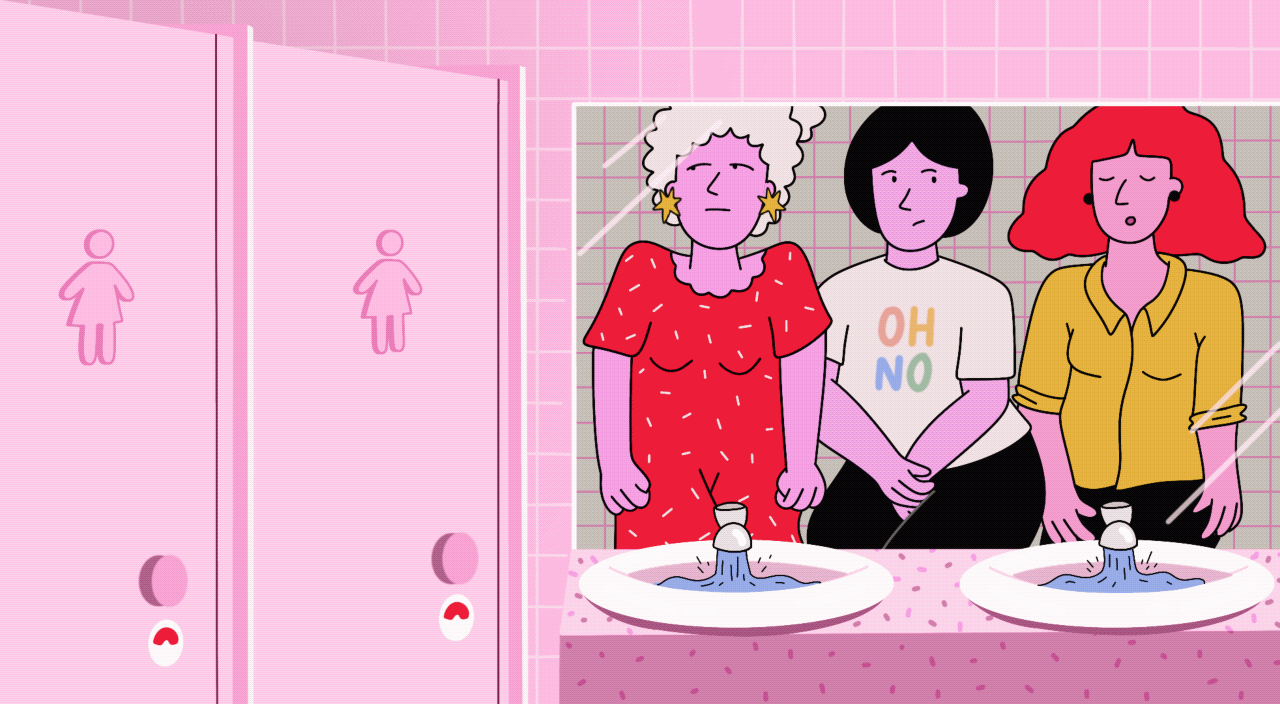Do any of you love to read? Do you enjoy winning free books and connecting with other big readers? Then join our Girlfriend Book Club today! We think you'll love it.
Menopause can impact the body in many ways. Hot flashes, brain fog, sleep issues and mood swings are some well-known symptoms that women tend to expect. But something many women may not be on the lookout for is the impact that perimenopause and menopause can have on their pelvic floor.
Tell Me More About My Pelvic Floor
Pelvic floor muscles support the bladder, bowels and uterus. With age, people tend to lose muscle mass and strength, including pelvic floor muscles. A weaker pelvic floor can lead to pelvic floor dysfunction, symptoms of which include bladder and bowel incontinence, constipation and having to urinate more frequently.
Pelvic floor dysfunction can also cause pain during intercourse in women (and erectile dysfunction, such as problems getting or keeping an erection in men.)
Issues Are Not Inevitable
Unfortunately, many women believe that if they are dealing with incontinence, constipation or pain during sex, it is just a part of aging. Dr. Riva Preil, a pelvic floor therapist, founder of Revitalize Physical Therapy and author of The Inside Story: The Woman's Guide to Lifelong Pelvic Health explains, "It is not 'normal' to experience pain during sex at any age. You shouldn't experience pain in your vaginal area when you wear jeans or leggings or when you sit for a long time. If you feel like you can't fully empty your bladder or you're constantly straining when making a bowel movement, these may all be signs of a pelvic floor issue, and in most cases, these issues can be treated."
Seeking Help
If you are experiencing any of these issues, make an appointment with your physician. Dr. Rachel Gelman, PT, DPT, owner of Pelvic Wellness & Physical Therapy, says, "Many times, when people experience symptoms such as constipation, there are several factors at play. It may be due to stress, hormones or not drinking enough water. But pelvic floor issues may be one of the reasons, too."
Be honest about the symptoms you are experiencing, even those you think are irrelevant or too embarrassing to admit. "It is all part of a puzzle to figuring out what is going on," explains Dr. Preil. "A medical professional cannot properly diagnose and find out the root cause of issues without all the information.”
After an initial consult, a physician may send a patient to a pelvic floor specialist. Pelvic floor specialists are certified physical therapists with specialized training in the pelvic floor. "Unfortunately, not all doctors know about pelvic floor PT,” says Dr. Preil. “And some are reluctant to offer referrals. Patients experiencing symptoms need to educate themselves and advocate for proper care."
Meeting with a Pelvic Floor Specialist
To find a certified pelvic floor therapist, go to the American Physical Therapy Association or the Herman & Wallace Pelvic Rehabilitation Institute and search for a practitioner in your area. Pelvic therapy is intimate work, so it is important that patients feel comfortable with their practitioner. It may be worth meeting with several to find one that is a good fit.
An initial visit with a pelvic therapist takes about 60-90 minutes. “At my practice, we start by just talking with the patient while they are dressed patient,” says Dr. Gelman. “It’s an in-depth discussion. I want to hear all of the nitty-gritty — bowel issues, sexual problems, bladder leakage — it’s all relevant.”
After speaking with the patient, Dr. Gelman will suggest an external exam of the abdomen, hips and glutes. If the patient is comfortable, she will move on to an internal pelvic floor exam. "I explain to my patients that all parts of the exam are completely optional. During the internal exam, I use a gloved, lubricated finger to assess the pelvic floor, there is no speculum or stirrups like in a gynecological visit. I'm looking for redness or discoloration of the vulva along with assessing the pelvic floor muscle tone and coordination."
After the exam is complete, the patient will get dressed, they will discuss a treatment plan together.
More Than Kegels
When women think about strengthening their pelvic floor, they immediately think they need to do Kegel exercises. A Kegel (pronounced kee-gull) is an exercise where you try to tighten your pelvic muscles for three seconds at a time, then relax for three seconds and repeat.
However, sometimes Kegels are not the answer. “Kegel exercises are part of pop culture,” explains Dr. Preil. “They are mentioned in movies and TV shows like Sex in the City. But Kegels aren't the only way to improve pelvic floor function. And sometimes, doing Kegels can make symptoms worse. Sometimes, the pelvic floor is overactive or tight and doing Kegels can make the muscle tighter, exacerbating the problem. That’s why people experiencing issues should consult with a pelvic floor specialist so that they can come up with a treatment plan that is right for them.”
Pelvic floor experts have a toolbox full of exercises to help with a variety of pelvic floor issues. These include wand work, resistance training, floor exercises, yoga breathing exercises, and squats. “Just like physical therapy for other muscles, patients will have sessions in the office with their practitioner and exercises they need to do at home,” explains Dr. Gelman. “Also, some practitioners do offer virtual visits so if you can’t find a therapist near your home, don’t let that discourage you from seeking treatment.”
“It’s a process, not a magic pill,” explains Dr. Preil. “But if patients see their practitioner regularly and do their homework assignments, they should see significant improvement in 6-8 weeks.”
Don’t Give Up
"It is disturbing when I meet with patients who say their symptoms were dismissed by their partner, peers, or worse, their medical provider," says Dr. Gelman. "Too many women, especially older women, are told, 'This is your life now. Deal with it.' But it doesn't have to be that way. Aging doesn't mean you have to live with peeing in your pants or give up sex because it's too painful. There are options if you seek them out and advocate for yourself."
Pelvic floor issues are common. Dr. Preil estimates that one in three women will experience pelvic pain in their lifetime. “The good news is, it is never too late to seek help,” she says. “With proper care and consistency, you can improve your pelvic floor muscles at any age.”
Any of you have troubles with your pelvic floor? Let us know in the comments below.

Ana Curbelo
Follow Article Topics: Health









